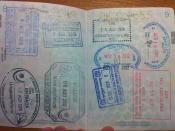Monetary Union with United States
In recent years, there has been an ongoing debate over Canada's exchange rate policy because of its volatility and low value against the U.S. dollar. Canada has two reasons to be still in a floating exchange rate system: Keeping open capital markets going and independence of its monetary policy that led Canada to be successful in stabilizing its economy by keeping inflation and interest rates low. Although this is the case, in their paper, "From Fixing to Monetary Union: Options for North American Currency Integration." Thomas Courchene and Richard Harris argue that flexible exchange rate regime is not useful anymore for growing Canadian economy.
According to the authors, Canada's great amount of trade with United States and limitations of its current exchange rate system make it logical to adopt fixed exchange rate regime. This type of regime will fix the value of Canadian with U.S.
dollar, which may lead to a North American Monetary Union including Mexico by replacing Canadian with US dollar. An important example to this type of a union is the European Union which seems very successful in recent years.
Canada's volatile and weak exchange rates against U.S. dollar since 1970s caused many problems in the economy, such as an unpredictable economy and distortion of the value of prices in market. Courchene and Harris points out that Canadian dollar depreciated from 104 cents in 1974 to its lowest value of 63 cents in 1998 that led a decline in the productivity and competitiveness of Canadian firms relative to the ones in United States. This was the most important reason why the relative standard of living of our citizens fell over time which made many skilled Canadians to migrate to United States. Moreover, unpredictable floating exchange rates put more expenses on Canadian...


